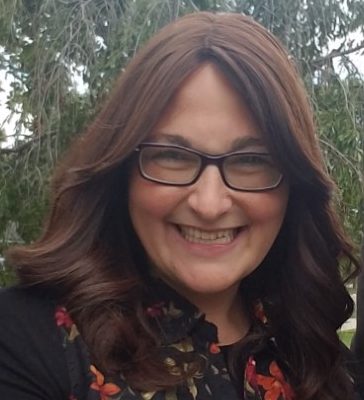Spending Accounts

What are the spending priorities of these “average” frum Jews, and how are their principles reflected in their fiscal choices?

Where do you save?
Where do you splurge?
What’s a nonnegotiable expense and what can you forgo?
We spoke to a selection of frum families who occupy that middle ground — they’re making it, some comfortably and some less so, but they’re not riding high and they’re also not on the receiving end. What are the spending priorities of these “average” frum Jews, and how are their principles reflected in their fiscal choices?
Take a look at their spending to get a view of their values. Maybe you’ll find yourself too
Meet the Panelists
What’s your overall attitude toward money and spending?
B. Glaser
Age: 50s
City: Boro Park
Occupations: I’m a homemaker; my husband is in the import business.
Family: 9 children aged 8-31, 5 are married
I don’t think I’m an overspender, but I don’t pinch pennies either. A few years ago, I was sitting at a family simchah and everyone was complaining how you can’t rent a nice gown for less than $2000. I asked everyone if they remembered what I wore to my son’s wedding. Everyone said, “Oh, you looked gorgeous!” but I pressed them, “Do you actually remember what I wore?” Of course, no one did.
As it happens, I had rented the cheapest, nicest gown I could find. It cost $500, no one remembers what it looked like, but everyone remembers that I looked gorgeous.
I don’t spend money to impress others, but I would spend money on things that matter to us.
Moshe Cohen
Age: 40s
City: Oak Park, Michigan
Occupations: I’m in the food industry; my wife is a homemaker
Family: 9 kids ages 1 to 17, including one with special needs
My priority is my children’s mental health. I’m willing to spend a lot for private therapies and psychiatrists in order for them to get the best, but we’re content to wear second-hand clothes and drive clunkers. We tried really hard to stay away from credit cards, but we don’t always have the cash up front to pay (for example, an initial intake and eval with a good psychiatrist can cost $350). We’ve been relying on credit cards, which we know is a mistake.
It’s probably horrible to say this (although I don’t think we’re the only ones), but the pandemic has been great for us financially, what with the stimulus checks and child tax credits. We used the money to pay off the credit card bills and even managed to put some away for the future.
Yosef G.
Age: 58
City: Brooklyn, NY
Occupation: Real Estate
Family: I’m single and have 5 kids, 4 of whom are married.
My philosophy is simple: Live within your means. I married off four kids without borrowing money. I learned a lot from my parents: They came from Europe and didn’t always have money. Even once they did have means, they were extremely generous with others but didn’t spend unnecessarily on themselves. I try to do the same, although I could afford more today.
Toby Stern
Age: 39
City: Los Angeles, California
Occupations: My husband is a sales manager; I teach part time.
Family: 8 kids, ranging from 2-17
It comes in waves. Sometimes the amount of shopping that we need to do is overwhelming (like when preparing kids for sleepaway camp), but we just have to buy what we need. Other times, my husband and I try to consciously cut back on our spending.
Goldie Samuels
Age: 38
City: Lakewood
Occupations: Therapist; husband learns at BMG
Family: 7 kids, ranging from ages 1 to 15
We’re very budget minded people. We try to live within our means while at the same time give our children a normal, balanced childhood. We don’t believe you need to be extravagant to make your kids happy. We try to tune in to our family, giving our kids a sense of happiness, of belonging. Practically speaking, we live within the norm of our community and don’t feel a need to keep up with the Joneses. We’re happy to live simply, dress the younger kids in hand-me-downs when possible and try to save wherever possible. It’s easy for us to live like this because we live on a low-key block; this makes all the difference.
Yechiel and Shifra Jacobson
Ages: 40s
City: Cleveland, Ohio
Occupations: Chinuch and Real Estate
Family: 13 kids, aged 3 to 22
We aim for the middle of the road. We’re definitely not fancy, but we have some kids who have concerns about looking nebby and we respect that, acknowledge it’s a normal teenage thing, and try to meet their needs. When our kids ask for something, let’s say a bike, we ask them, “What’s the most expensive bike a classmate has? What’s the least expensive?” Then we aim for something in between. Our kids recognize that this middle-of-the-road attitude is a conscious choice and not dependent on how much money we actually have, so they’re not resentful.
We believe that every single dollar we have is from Hashem and that money needs to be used to serve Hashem. Sometimes even the middle of the road seems expensive and difficult, but we acknowledge that that, too, is from Hashem.
Even if we suddenly became rich somehow one day, we wouldn’t change our lifestyle very much (although I think we’d start hiring repairmen when necessary, instead of going the DIY-and-hope-for-the-best route), because we’d still have the same attitude.
Chaya Norkin
Age: 50+
City: Beitar, Israel
Occupations: Currently I’m a homemaker and foster mom. My husband works in customer service for an American company.
Family: 10 kids aged 11-30, 6 are married, one is engaged
I try to be thrifty and careful with money. I live according to the belief that if we really need something (and sometimes a want is a need), Hashem will make sure we get it. For example, at the same time that I started having issues with my stove, my friend was moving and was selling her three-year-old American stove for less than half its retail value. I got a great stove for a great deal; I didn’t even have to wait for my stove to die.
But I don’t just throw things out without thinking. My sister had the same old stove, so before I got rid of mine I asked her which parts she wanted to take.
I can’t afford to buy things cheap because that often means replacing them sooner. I have brand-name pots, because that usually means good quality, but I don’t have the most expensive set there is.
It’s also become a family joke that when we’re heading out to shop, let’s say for a chassan or kallah, we ask, “What are you planning to buy?” and follow that up with “And what do you think Hashem is going to actually send you home with today?” Two very different questions! Everything is in Hashem’s hands.
Brachi Silver
Age: 30s
City: Five Towns
Occupations: I work in office administration; my husband works in real estate
Family: 4 kids; the oldest is 8
We make it a strong priority to live within our means. Sometimes we track our budget on a spreadsheet, but that usually peters out within a month or two, although we still have a general sense of what we’re doing. I believe that using words like “this isn’t appropriate right now” gives kids a better sense of security than “we can’t afford it.”
We’ve seen a lot of hashgachah in our finances. When we bought a house, we knew the mortgage would be doable, but tight. Hashem helped; my husband suddenly saw growth in his career that was outside the normal trajectory of our expectations. Instead of just making it, that gave us some breathing room.
How we do bar mitzvah
Yechiel and Shifra Jacobson
We purposely chose to live in a city where people live within their means. The environment affects our kids’ expectations. Our bar mitzvah boy was happy with the event we held because it was similar to his friends’ bar mitzvahs. That said, we did it as cheap as we could get away with. We hosted the standard kiddush in the shul for the community. Many of our relatives came in from out of town, so we also had to host all the Shabbos meals for 70 people. A relative who’s in the food industry made most of the food and refused to be paid for it. I made the rest of the food. In total, including renting the shul, the ingredients I used to cook, and the paper goods, the bar mitzvah celebration cost around $1,000. When you add tefillin, clothing for the bar mitzvah boy and family, and other associated costs, it probably came to around $4,000.
Where I splurged, where I saved
I didn’t splurge at all, but in the future maybe I would. The Bo Ba’yom happened to fall out on Shabbos; usually that would have been two separate events. I don’t think we’ll get that lucky again.
What I would do differently next time
I wouldn’t do the cooking myself. I remember being too busy to get dressed because I was managing the kitchen and warming up the food. I couldn’t really enjoy my own simchah when I was stressed about the food like that.
Before our next bar mitzvah, I’ll check in with our son about what kind of events the other boys in the class are having. If everyone’s still doing the standard kiddush in the shul, we’ll do it again, but if his classmates are having formal dinners in rented halls, he’ll get that too.
Moshe Cohen
For our first bar mitzvah, we hosted a kiddush for the shul and Shabbos for the extended family. Including clothes for everyone (which doubled as Shabbos outfits for the season), it cost about $2,200. Everyone enjoyed it, but it was a lot of money for just one day. When my next son’s bar mitzvah rolled around, I offered him a choice — the same as his older brother, or a week-long trip to Israel with me. He chose the trip, which cost about $2,000 in total (we stayed with relatives and they paid for a lot of the attractions and food).
Our most recent bar mitzvah was during the first wave of Covid, which cut costs considerably. We had a small drive-by event where we gave out prepackaged food my wife prepared. It cost about $500.
Where I splurged, where I saved
I know many people are sending invitations via email and WhatsApp these days, but there’s really nothing like getting an invitation in the mail, so I guess that was a splurge. We saved by getting cheap invitations and hand-delivering the ones in the neighborhood.
We always save on the bar mitzvah boy’s suit — we get him the cheapest one we can find at the local suit store. Our boys don’t know anything about brands, so there’s no point in getting an expensive suit that he’s going to outgrow in a few months anyway.
What I would do differently next time
I’d be less concerned about making sure my sons all had the same amount spent on them. Our son who had his bar mizvah during the pandemic was actually thrilled with his drive-by event. He’s on the quiet side and had been really nervous about a big shebang. Next time I’d start by asking my son to tell me how he wants to celebrate. I’m willing to hear out-of-the-box ideas.
B. Glaser
In our circles, a bar mitzvah is a big beautiful affair. Still, we made ours very simple. We held it in a catering hall, but we took whatever the caterer offered as part of his package and didn’t add any extras or upgrades (not even nicer tablecloths). I also made everything for the dessert tables myself, which turned out to be very memorable — I was getting calls for my rugelach recipe years later!
We tried not to spend money on music. For our first bar mitzvah, we didn’t hire a musician. For the second bar mitzvah, we hired a new keyboard player who was thrilled to get a gig, and we were even more thrilled to pay his $250 introductory rate. In total, the bar mitzvah events cost in the range of $2,500.
Where I splurged, where I saved
I did splurge a little on the menu, for a more popular cut of chicken. I saved by having my girls wear their Shabbos dresses and ordering the lowest-priced bentshers and invitations. (I never understood why anyone would choose to spend extra on raised fonts or gold lettering — everyone just writes the date in their calendars and throws them out. At best, they’ll write their grocery list on it.)
What I would do differently next time
I guess I would try to cut corners a bit more. I have no major regrets; my boys all remember having beautiful simchahs. They didn’t feel like anything was missing.
Chaya Norkin
My last bar mitzvah was four years ago. It fell out two weeks before my daughter’s wedding. We kept costs down by wearing some of the same clothes to both simchahs and only doing professional family pictures once. Other costs included about $1,500 for the tefillin, $200 for his hat, $500 for his beketshe and suit, and $100 to rent a small hall. We self-catered the meal, which cost about another $500.
Where I splurged, where I saved
We saved on food, paper goods and hall; we splurged on the bar mitzvah boy’s hat and tefillin.
Toby Stern
We’re about to make our first bar mitzvah next year. Baruch Hashem, we have a large family out-of-town who are planning to come in so we can’t just settle for a kiddush in shul. We need to prepare an entire weekend for them, which obviously makes things more expensive. We don’t know yet how much it’s going to cost.
Where I splurged, where I saved
I would love to invite all my close friends to the seudah as well, but we had to draw the line somewhere. We’re saving by making it strictly for family.
The best piece of advice I got
A neighbor who had made several bar mitzvahs told me, “Don’t get carried away with all the arrangements; outsource as much as you can so you can enjoy the moment and be present.”
Goldie Samuels
We did the norm, in a standard beautiful hall — there are great amenities here in Lakewood. The hall cost $3,500, Tefillin $2,500, invitations $250, flowers $150, photographer $600, makeup $65, bentshers $100, Shabbos kiddush was $1,000 and outfits for the whole family was at least another $1,000. It was tasteful but typical.
Where I splurged, where I saved
E-invites are becoming common, so I cut down there and sent invitations by email to a lot of people. Pictures matter to me, so I splurged on a photographer. I planned in advance and got some things earlier so all the charges wouldn’t turn up in one last-minute credit card cycle. And I also borrowed things like jewelry and clothes for the baby. Some savings were coincidental — our last bar mitzvah was during Sefirah, so we saved on music. It was also during Covid, so it was smaller than usual. We made the kiddush on Shabbos for men only, and no dessert reception at night, which cut costs.
What financial decision do you regret?
Yechiel and Shifra Jacobson
It’s not a painful regret, but we’ve definitely “lived and learned.” We used to be very strict with our finances and our kids and it was based on projections from our own childhoods. For example, we had ideas about how many Shabbos dresses each kid should have, tried to avoid Jewish stores because of the high prices and wanted to only send each kid to summer camp once, after which they’d either pay their own way or work in the summer. We’ve come to realize that we needed to mellow. Our goal is to raise healthy, happy kids who have self-confidence. We were open to change, willing to reassess and reevaluate some of our considerations and keep communication open with our kids. We’re much less strict now.
Chaya Norkin
Our mortgage has an option to make a big payment every five years, so you can pay it off faster. We’ve never taken advantage of it and I feel that was a big mistake. We could have taken a 30-year mortgage and turned it into a 20 to 25-year one.
Toby Stern
When my husband took on his job, it wasn’t clear how much he’d be getting paid. In retrospect, of course, it’s min haShamayim and obviously meant to be, but it would have been a smoother transition for us if we knew exactly how much he’d be earning and exactly how much it costs to live here, and had all those financial logistics worked out in advance.
How we do family vacation
Yechiel and Shifra Jacobson
When it comes to vacation, I don’t think spending more makes it more fun. I think it’s all about attitude and how much the parents are participating.
Since we have kids of all ages, we split up. The younger kids are happy with day trips, indoor playgrounds, and local attractions (we don’t usually spend more than $100) and I have older daughters who are drivers who will take the others to something more exciting like an amusement park or an overnight hotel stay. We try to find Groupons or deals and aim to spend about $80 per night on the hotel, maybe $30 to $40 per ticket for attractions, and obviously there’s gas and food to factor in. Sometimes my husband takes our older kids skiing during mid-winter break. It wasn’t worth the trouble trying to borrow equipment, so we rent equipment there. It costs about $500. The younger kids wouldn’t appreciate it, so they don’t go.
Where I splurged, where I saved
We don’t spend a fortune on vacations, but counting out pennies is not fun either. The kids would feel that, and it would ruin the experience. We make a budget but have a relaxed attitude and try to be generally reasonable. Years ago, we lived in a city that didn’t have chalav Yisrael soft ice cream. Whenever we visited a more central location and we had the rare opportunity to go out for ice cream, we went all the way — what’s another $2 to get all the toppings you want? Our kids felt like a million bucks!
What I would do differently
Maybe we’d go away a little more often; it’s hard to juggle, but these are the things that become fond childhood memories.
Brachi Silver
We value quality family time, so we do a lot of family Sunday trips, especially in the summer. An all-day amusement park can cost $250 to $300. I host my family during Yom Tov, but during Chol Hamoed, neither of us works, so we go and spend one night at a hotel suite with a day trip to some attraction. Since our kids are young, we don’t do anything more major than that. In total, the hotel, activities, and trips during Chol Hamoed will run about $1,000. Every few years, we try to travel a little further by plane — that’s approximately $4,500 total.
Where I splurged, where I saved
We splurge on activities that our kids will enjoy and remember for a long time. We save by not eating out, but that’s really because our kids are picky eaters, so it’s more practical to bring our own food.
The best piece of advice I got
In 2019, we planned to travel to Florida. Flying with four kids under six was a pretty daunting proposition, until someone suggested we bring my younger sister along to help out. We paid for her flight, food, accommodations, and tickets to attractions, which came out to about $700 in total, in exchange for her help on the plane and babysitting services when we wanted time alone. It was worth it.
Moshe Cohen
In theory, family vacations are important to me. Unfortunately, they don’t happen as often as I’d like. My wife says going on a family vacation is triple the work for her than staying home, and with our special needs child, it ends up not being very relaxing for any of us. Instead, we go on day trips in the area up to two hours away just for a change of scenery on any random Sunday during the year, but we don’t usually venture further than that. The last time we went further away as a family was a few years ago. We went to a hotel/waterpark overnight. The total cost was $400.
Where I splurged, where I saved
Wherever we go, we save by bringing our own food, and splurging on the attractions. We also save by buying family memberships to local museums and attractions. For example, a one-time admission to the Detroit Zoo (five minutes away) is $15 per adult and $13 per child, but a yearly family membership is $139 and gets us discounted tickets to other zoos.
B. Glaser
I’m a huge believer in family time. We aim for low-cost vacations, like staying at motels instead of hotels. We try to go away at least once a year, always something different. We don’t plan in advance; we’re the kind of people who say, “Such and such sounds like fun, let’s see if it’s available!” and then pick up and just go. The downside is that we don’t have time to find good deals, so we try to compensate for that by not visiting tourist attractions (which are notoriously overpriced). For example, one Chol Hamoed we decided at the last minute to rent an RV for three nights. It cost $500, not including the park rental fees, but we didn’t do anything else that required entrance fees, just explored nature walks instead. We had a wonderful time!
Where I splurged, where I saved
I bring food with us so we don’t have to spend money on restaurants.
Chaya Norkin
We don’t do vacations as a family. When I go away, it’s usually without my husband because he’s working, and even then, it’s just to visit relatives around the country. Trips like that are usually just the price of transportation. During Chol Hamoed, we do day trips together and keep busy locally. Baruch Hashem, my kids don’t feel deprived; they’ve never asked for more.
Toby Stern
Usually the furthest we get is to the East Coast for Yom Tov or simchahs. We recently had a family wedding in Lakewood; we used miles and our parents helped us cover the price of tickets. Siblings hosted us and were even able to loan us one of their cars during our stay. Our out-of-pocket expenses after that weren’t too high; for the gas and occasional pizza and Danish, approximately $300. We’ve also participated in a two-hour timeshare presentation that earned us a cheap trip to Arizona with the family. Even the little bit they initially charged, they reimbursed us, so our expenses were just gas and food. Sometimes we drive an hour or two to a hotel or villa where we spend the night for about $200 a night, using the points from credit cards.
Where I splurged, where I saved
We’re more willing to splurge in order to spend time with the extended family, but we save by not going on bigger vacations.
Goldie Samuels
We go away once a year, but it is mostly covered by family.
If you got an unexpected thousand dollars right now, what would you spend it on?
Brachi Silver
I’d put it towards a sheitel. It’s so hard to justify a big expenditure towards something that’s just for me; it feels so selfish.
B. Glaser
Right now, I’d be tempted to buy a new refrigerator, but I would probably put it away for a rainy day.
Yosef G.
I’d probably take my children out to dinner; what could be nicer than the whole mishpacha together? If there’s any money left over, I’d give it to tzedakah.
Chaya Norkin
I would either buy myself a new sheitel or put it aside toward a family trip to the US.
Toby Stern
Pay off credit card debt.
Goldie Samuels
New mattresses, or we’d pay off some bills.
How we do annual mishloach manos spend
Yechiel and Shifra Jacobson
In our previous city, the kids each gave mishloach manos to about five classmates, and we made them very nice. When we first moved here, a mom told me all the kids give to every single classmate, so we completely changed our strategy. Now the goal is to make many mishlochei manos inexpensively, without sacrificing the cute factor that’s so important to my kids. The younger kids are happy with my creative ideas, and we can get away spending about $2 each, but the older kids have very specific ideas about what’s normal, and their mishlochei manos are probably closer to $5 each.
Where I splurged, where I saved
I buy packaging online (the dollar store sounds cheaper, but it’s not). I generally scrimp on the little kids and spend more on my older kids; the older ones care but the younger ones don’t know the difference.
What I would do differently next time
I see that some people spend less on the food because they’ve spent more on a really nice package. I’m thinking of aiming in that direction.
Yosef. G.
I think mishloach manos has gotten completely out of hand and I’m very against it. It makes me crazy to see mothers yelling at their crying kids in Amazing Savings as they search for the perfect package for their theme. I do the mitzvah as the halachah requires: I give cake and a fruit to two people. I spend about $10 to $15 on each, max.
I also tell everyone not to bring me any over-the-top mishloach manos. My daughter once gave me expensive Belgian chocolates when I knew she was struggling financially. I like chocolates as much as anyone, but it pained me to eat them. I told my kids not to spend more than $5 to $10 on me, and if they don’t want to give me mishloach manos, that’s fine, too.
Where I splurged, where I saved
I splurge and give my two brothers-in-law wine, worth about $60 each. But that’s not mishloach manos — I do it before every Yom Tov.
I save in every area, but that has a lot to do with my stage of life. I don’t have young children, I don’t have to worry about the kids’ teachers. When my friends come by on Purim, we make a l’chayim and dance a little. They know full well by now that any fancy mishloach manos I get is going to my cleaning lady.
Moshe Cohen
It physically pains me to spend a lot on mishloach manos when everyone knows that at the end of Purim no one can remember who gave what and everyone just has a big pile of what’s mostly junk food. We start off by preparing about 50 packages for about $1 to $2 each (my kids are welcome to add and make theirs a little bigger if they want to pay for it), and as we start to receive mishloach manos on Purim day, we peel off labels, move things around, and shamelessly recycle almost everything we get. To us, a successful Purim is when we have no candy left at the end.
Where I splurged, where I saved
I spend a little more on the mishloach manos to teachers and rebbeim — usually a bottle of wine and some chocolates (no cash). We also like to give a nice mishloach manos to older people who live alone and who might otherwise not get any at all. We usually take a little of this and a little of that from all the nice ones we get throughout the morning and put together a very respectable mishloach manos without spending a cent.
What I would do differently next time
When I hear the next day how kids are collecting candy to distribute to children in hospitals or something (I know that makes no sense), I always think, “See?” We plan to continue what we’re doing.
B. Glaser
This is not an area where I want to spend a lot. I try to keep them in the $2 to $3 range. There were some years that I came up with a cute theme and ended up spending closer to $5 per package, but I compensated by giving out fewer.
Brachi Silver
I definitely spend less than most of my peer group. I feel you can either spend a ton of money, or spend less money but work harder. My mishloach manos is homemade, usually a fancy pastry and a delicious drink. Last year, I spent $200 for 45 mishlochei manos — and that’s including the nice packaging.
Where I splurged, where I saved
I splurge on effort and on quality ingredients because I want the food to turn out good. I save on packaging.
Chaya Norkin
I’ve been doing the exact same thing for the past 19 years. I send a drink and a homemade smiley-face challah that we call the lechem hapanim. I make about 35 to 40 in total. Four drinks cost 12 to 15 shekel and the ingredients and packaging for the challahs is about 50 shekel in total. For the rebbeim and teachers, I give a more expensive sparkling grape juice (20 shekel a bottle) with microfiber shmattehs folded into towel origami (5 shmattehs cost about 10 shekels; I use about 2 per gift). A person can never have too many shmattehs; it’s a great gift!
Where I splurged, where I saved
I splurge on the drinks, but everything else is done very simply. If I feel like dressing up the packaging, I add some curling ribbon, which is inexpensive but pretty.
Toby Stern
I try to keep it as minimal as possible but still looking nice. Between neighbors, teachers and our kids’ friends, we prepare about 150, including family and kids’ ones. We give out a bottle of grape juice with something attached to it, either a chocolate bar or a little bag of candy-coated almonds. Altogether we spend roughly $400 to $500 on mishloach manos every year.
Where I splurged, where I saved
We buy the food by the case to get it a little cheaper. We also save by giving everyone the exact same thing.
The best piece of advice I got
Someone once told me that it’s so much easier to make one type, instead of making separate ones for the kids and from the family as a whole. We give the same thing to everyone, whether it’s a kid at the door or the family down the block. (The bigger girls want to do their own shtick anyhow.)’
Goldie Samuels
I don’t want to do something nebby or cheap; my husband likes to give something that people can serve at the meal. We usually prepare a meat salad. It costs about $2 to $3 in total, but it’s useful and not over the top. I give out about 30, plus another 20 nicer ones with wine and a check to the rebbeim and teachers.
Here in Lakewood, traffic is absolutely crazy on Purim. So I make priorities: the kids’ teachers, a few of their friends. I don’t even deliver to my own friends anymore! My kids do their own thing, matching their mishloach manos to their costume. I save costs by ordering things early on Amazon to get the best price. The kids’ mishloach manos altogether costs about $100.
The best piece of advice I got
I realized on my own: Do things in advance. If you wait ‘til the last minute, stores run out of what you want and then you’re stuck scrambling. Some teachers are also open to receiving their mishloach manos on Taanis Esther, which is helpful. Try to enjoy the day.
What’s your attitude toward credit cards/borrowing money?
Yechiel and Shifra Jacobson
Our opinion has changed over the years. We used to be staunch believers in never, ever spending beyond our means. Over time, we realized there are certain times when we just have to, like when sending a daughter to seminary or making a wedding. It’s virtually impossible to spend within our means at those points. We recognize that it’s part of the cost of raising children. That said, we spent a lot of stressful years juggling those 0% cards that seemed like such a good deal in the beginning of the term. For our last simchah, we took a loan against our house that had flexible payment options, which felt like a nice cushion.
Brachi Silver
We definitely believe in using credit cards because we want to take advantage of all their perks and bonuses, but we pay off the balance of every single credit card every single month. With borrowing, we are fine with equity when it comes to the mortgage and car lease, but that’s the only type of borrowing we do. If a situation should arise that we’d need to borrow or even charge a purchase while being uncertain we can really pay it back, we’d try to cut back in other areas.
Moshe Cohen
I don’t love it but it definitely has a time and place. Credit cards in particular — especially for us — are a major slippery slope. Everything looks affordable until it’s all added up at the end of the month on a credit card statement. Suddenly it’s this huge number we can’t pay back. On the other hand, for bigger purchases like furniture, we love store credit cards, because it’s not impossible to pay off and we don’t use it at other places.
B. Glaser
I feel like it’s a necessary evil in today’s world, although my son, who’s a financial advisor, says it’s possible to live without. I disagree. How are you supposed to shop online for your teens without one? That said, I did cut down from four credit cards to one and I pay off my balance every month. I don’t like owing people (or credit card companies) money — it makes for a much calmer life knowing you are debt-free.
Yosef G.
I think using credit cards when you can’t afford to pay off the balance at the end of the month is a huge mistake. The interest is astronomical. I do use credit cards, but pay it off each month.
Chaya Norkin
I learned to only borrow money if there is a real way to pay it back.
Credit cards are useful for things that you will use long term so it makes sense to do payments, like a fridge. You might not have 4,000 shekel to lay out all at once, but it can be paid over the course of a year, and then you use the fridge for hopefully 15 to 20 years.
It doesn’t make sense to be paying for something in payments that you have already long finished using. I also don’t like borrowing money unless I know that there is a real way to pay it back, such as a paycheck coming in the next day or week.
It is very hard to make a simchah without borrowing money, but I try very hard to be realistic and borrow only what I know I can pay back in a reasonable length of time.
Toby Stern
We try not to use credit cards, and use cash whenever possible, but if we need to use it, then we use it. We transfer to other credit cards when they have offers of 0% APR on balance transfers.
How we do rebbeim/morahs end-of-year gifts
Yechiel and Shifra Jacobson
Like everyone else around here, we give rebbeim $50 on Purim along with wine and the requisite pineapple (I always wonder what they do with all those pineapples). We don’t always give the Morahs money, but I try to write a heartfelt note of appreciation at least once over the course of the school year. We know from being in chinuch ourselves that those notes can mean more than money.
Where I splurged, where I saved
We splurge on giving to the rebbeim; we don’t give to every single teacher, though. Especially if the teacher wasn’t a good fit for our kid, we feel there aren’t any expectations after ongoing issues.
Brachi Silver
We don’t send gifts at the end of the year — we give gifts throughout the year. This is something we highly prioritize and we try to be generous. Yes, we pay full tuition and the teachers get paid, but we believe it shows the deep hakaras hatov we feel and shows the kids that we value their teachers. I also feel like a side effect is that it makes the teachers appreciate my kids a bit more and see them in a rosier light.
Where I splurged, where I saved
I don’t save here at all. There’s nothing homemade, no gift cards, no presents. We give checks — big ones. The morahs get $100 on Chanukah and again at the end of the year, and the rebbeim get $150 to $180 for Chanukah and Purim. Yes, it’s unfair that the rebbeim get more than the morahs. I don’t know why it’s like that, but that’s what everyone does here.
The best piece of advice I got
Gifts to teachers should be prioritized, even if you need to cut somewhere else to do it. I agree one hundred percent.
Moshe Cohen
We give a Chanukah gift. The classes usually do group gifts, with everyone chipping in about $15 to $20. We also give them mishloach manos and a small gift at the end of the year. The amount really depends on my financial situation at the time, but it’s usually between $18 and $54. We always write a nice thank you card.
Where I splurged, where I saved
We splurge on compliments. One year, early on in our parenting career, we asked around and were told that the going rate for monetary gifts was $50. Money was extremely tight, and somehow we made it work, but I really resented it. I did not want to give that money. I was only trying to keep up with everyone else. We learned to give whatever we give with a full heart. I don’t ask around anymore and just give whatever we can afford.
The best piece of advice I got from others with experience
I try not to listen to what others say about it. I used to, and it only made me feel bad. “This family gives $100,” or “It’s cheap to give anything less than $50.” Is it really? What exactly is the goal here? If the goal is appreciation and showing hakaras hatov, then surely the card is more important.
B. Glaser
I wish I could afford to give our rebbeim and morahs what they really deserve. In our community, the class chips in for a group gift Chanukah time — we usually give $3 to $5 per teacher. Purim-time, we usually give the rebbeim $50 cash and the morahs a small gift worth about $10, always with a personal note because we know they appreciate that. We don’t give gifts at the end of the year, although we acknowledge they deserve it.
Where I splurged, where I saved
I don’t splurge or save; I give each rebbi and teacher the same amount, even if there’s one who is working especially hard for one of my kids. (I worry that they may compare how much they get, and I don’t want anyone to feel slighted.)
What I would do differently next time
If I could afford it, I would give them more.
Chaya Norkin
Here in Eretz Yisrael, parents give money to rebbeim and teachers on Purim. We usually give $50 (200 shekel) along with our mishloach manos. At the end of the year, the class chips in to buy a group gift. They usually ask for about 15 to 20 shekel per kid. It adds up fast, but for us it’s a nonnegotiable. The teachers deserve this small demonstration of hakaras hatov.
Toby Stern
I remember the gifts I got when I taught; they were so appreciated and made me feel really good. I try to do the same. At Chanukah, the PTA organizes the gifts from parents. At Purim, we give $100 to the rebbeim and a gift certificate worth about $25 to the teachers, giving more to the full-time teachers than the ones who teach part-time. Sometimes I give end-of-year gifts too, but it doesn’t always work out. I tell myself, “We just gave them at Purim, it’s fine.”
Where I splurged, where I saved
This is one of the places where we just dive in and do it because we feel like it’s important. We don’t claim to have more money than we have, but we still try to give a b’kavodig amount within our means.
Goldie Samuels
At Chanukah, the classes usually collect money for the teachers, about $10 from each parent. If they don’t, I’ll give our own gift. I give $40 to rebbeim and $25 to teachers at Chanukah, and $75 to $100 to rebbeim and $18 to $25 to teachers at Purim. I try to give a little more than the standard (I’ve been told rebbeim should get minimum $50 at Purim), and I keep in mind that certain grades are harder to teach, like eighth grade boys. Since I give a large check at Purim, I don’t always give again at the end of the year. I do try to write a nice thank-you note though.
The best piece of advice I got from others with experience
Everyone says the rebbeim appreciate cash/checks the most, so that’s what I give.
What are you saving up for?
Brachi Silver
We’re saving up for our kids’ futures, future simchahs, and retirement.
Moshe Cohen
Nice backyard furniture. Some people in town have a little oasis in their backyards which makes it look so inviting, with outdoor couches and swings, strung lights, a barbeque, and fire pit. I’d love to do that too.
B. Glaser
For my kids’ weddings, so when I get to that time, I won’t have to borrow as much as I’d need to if I wasn’t saving money for it now!
Chaya Norkin
Hunter ceiling fans for several rooms in the house. And a family trip to visit my parents in Boston.
I also have one more bar mitzvah and another three chasunahs to make.
Goldie Samuels
Braces, and we want to finish off a room in the basement.
(Originally featured in Mishpacha, Issue 878)
Oops! We could not locate your form.







